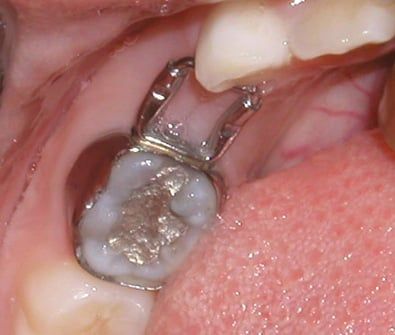
Dentist - Tampa, FL
Children Services

Child's First Pediatric Dental Visit
According to guidelines from the American Academy of Pediatric Dentistry (AAPD), your child should be seen by his/her pediatric dentist no later than six months after the eruption of the first tooth.
This visit mainly will involve counseling on oral hygiene, habits, and on the effects that diet can have on his/her teeth. It is NOT recommended to wait until age 3 to visit your dentist and as a general rule, the earlier the dental visit, the better the chance of preventing dental problems.
Children with healthy teeth chew food easily, learn to speak clearly, and smile with confidence. Start your child now on a lifetime of good dental habits.
The AAPD also recommends a dental check-up at least twice a year; however some children that may be at a higher-than-average caries risk may need to be seen more often.

Children's Tooth Development
Children continually get new teeth from age 3 months to the age 6 years. Most children have a full set of 20 primary teeth by the time they are 3 years old. As a child nears the age 6, the jaw grows making room for the permanent teeth. At the same time, the roots of the baby teeth begin to be resorbed by the tissues around them and the permanent teeth under them begin to erupt.
Primary teeth are just as important as permanent teeth for chewing, speaking and appearance. They also serve as placement holders for the permanent teeth. Primary teeth also provide structure to help shape the child's face.
Seal Out Cavities with Long-Lasting Dental Protection
Dental sealants are one of modern dentistry's most straightforward and most effective preventive procedures. Applying a sealant takes only one visit, is entirely painless, and provides a strong barrier against cavities!
Here's What to Expect During Your Appointment:
- Thorough Cleaning and Drying
We start by cleaning and drying the teeth to be sealed. To keep the tooth completely dry, we place soft cotton or gauze around it, ensuring no moisture interferes. A clean, dry surface is key for the sealant material to adhere correctly. - Prepping the Tooth's Surface
Next, a gentle etching solution is applied to the chewing surface. This mild acid lightly roughens the enamel, creating an ideal bonding surface for the sealant material. Afterward, the tooth is rinsed and dried thoroughly to prepare for sealing. - Applying the Sealant Material
The sealant is a protective, plastic-like material that we brush onto the grooves and pits of your tooth's chewing surface. This liquid material flows into every nook and cranny, bonding directly to the enamel. - Curing the Sealant
Finally, we use a special blue curing light to harden the sealant, creating a durable shield that removes harmful plaque and bacteria.
And that's it! Your tooth is sealed and protected in just a few minutes, helping you maintain a cavity-free smile with minimal effort. Sealants are excellent for children and adults who want to prevent tooth decay.
Space Maintainer
A space maintainer is a removable or fixed appliance designed to maintain an existing space. They are usually fitted to children when they have lost baby teeth early. The gap left from losing this tooth needs to be held open for the permanent tooth to erupt in its correct position.

Fluoride
Fluoride, a substance that's found naturally in water, plays an important role in healthy tooth development and cavity prevention.
Fluoride combats tooth decay in two ways:
- It strengthens tooth enamel, a hard and shiny substance that protects the teeth, so that it can better resist the acid formed by plaque.
- Fluoride allows teeth damaged by acid to repair, or re-mineralize, themselves.
Fluoride cannot repair cavities, but it can reverse low levels of tooth decay and thus prevent new cavities from forming.
The American Academy of Pediatrics recommends that these fluoride supplements be given daily to children between the ages of 6 months and 16 years. The dosage will change as your child grows. Only children living in non-fluoridated areas or children who drink only non-fluoridated bottled water should receive supplements.
Most children get the right amount of fluoride through a combination of fluoridated toothpaste and fluoridated water or supplements. Too much fluoride before 8 years of age can cause enamel fluorosis, a discoloration or mottling of the permanent teeth. This condition is unsightly but harmless and often can be treated with cosmetic procedures.


Schedule an appointment today!